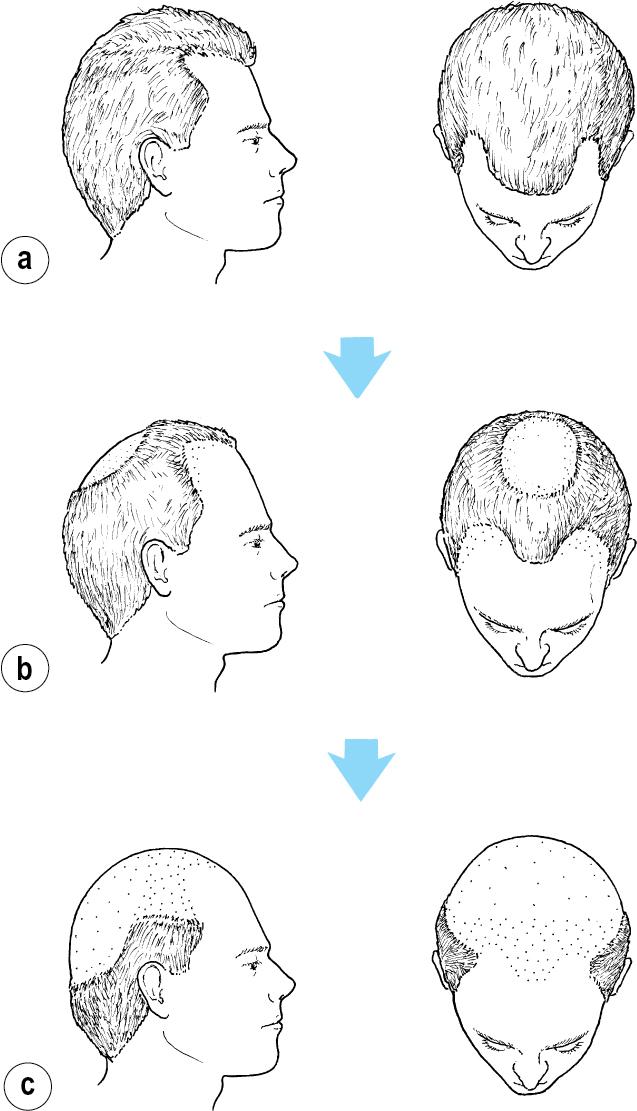Physical Address
304 North Cardinal St.
Dorchester Center, MA 02124
The division of alopecia into diffuse, localized and scarring or non-scarring helps in diagnosis ( Table 38.1 ). Hair loss from whatever cause (and also excessive hair) can result in psychological distress in both sexes. Scalp hair is an integral part of a person’s self-image and ‘face to the world’; hence the considerable amount spent on hairdressing and hair cosmetics.
| Type of hair loss | Causes |
|---|---|
| Diffuse non-scarring | Male pattern/female pattern, hypothyroid, hypopituitary, hypoadrenal, drug-induced, iron deficiency, telogen and anagen effluvium, diffuse alopecia areata |
| Localized/non-scarring | Alopecia areata, ringworm, traumatic, hair pulling, traction, secondary syphilis |
| Localized/diffuse scarring | Burns, radiation, shingles, kerion, tertiary syphilis, lupus erythematosus, morphoea, pseudopelade, lichen planus |
With diffuse non-scarring alopecia, patients usually notice excessive numbers of hairs on the pillow, brush or comb, and after washing their hair. The scalp shows a diffuse reduction in hair density. The causes are described below.
Male pattern baldness is inherited (the exact mode is unclear) and androgen dependent. Over several cycles, the androgen-sensitive follicles miniaturize from terminal to vellus hairs. Males are affected from the second decade and, by the seventh decade, 80% have involvement. Pattern balding also occurs in females, the majority of whom are hormonally normal. It becomes more pronounced after menopause and is present in 70% of 80-year-old women. In men, bitemporal recession followed by a bald crown is the usual pattern ( Fig. 38.1 ); women may show this but more commonly exhibit a diffuse thinning. Mostly, no treatment is required but, if indicated, topical minoxidil (Regaine) produces some response in one-third of cases, and finasteride can help in men. Oral iron to maintain a serum ferritin above the lower normal level may help in women. In men, hair transplantation is an option.

Endocrine disorders often present with hair loss. Underactivity of the thyroid, pituitary or adrenals can cause diffuse alopecia, as may hyperthyroidism. Androgen-secreting tumours in women produce male pattern baldness with virilization. Malnutrition induces dry brittle hair that becomes pale or red in kwashiorkor (protein deficiency). Diffuse hair loss is also seen with iron or zinc deficiency.
Become a Clinical Tree membership for Full access and enjoy Unlimited articles
If you are a member. Log in here